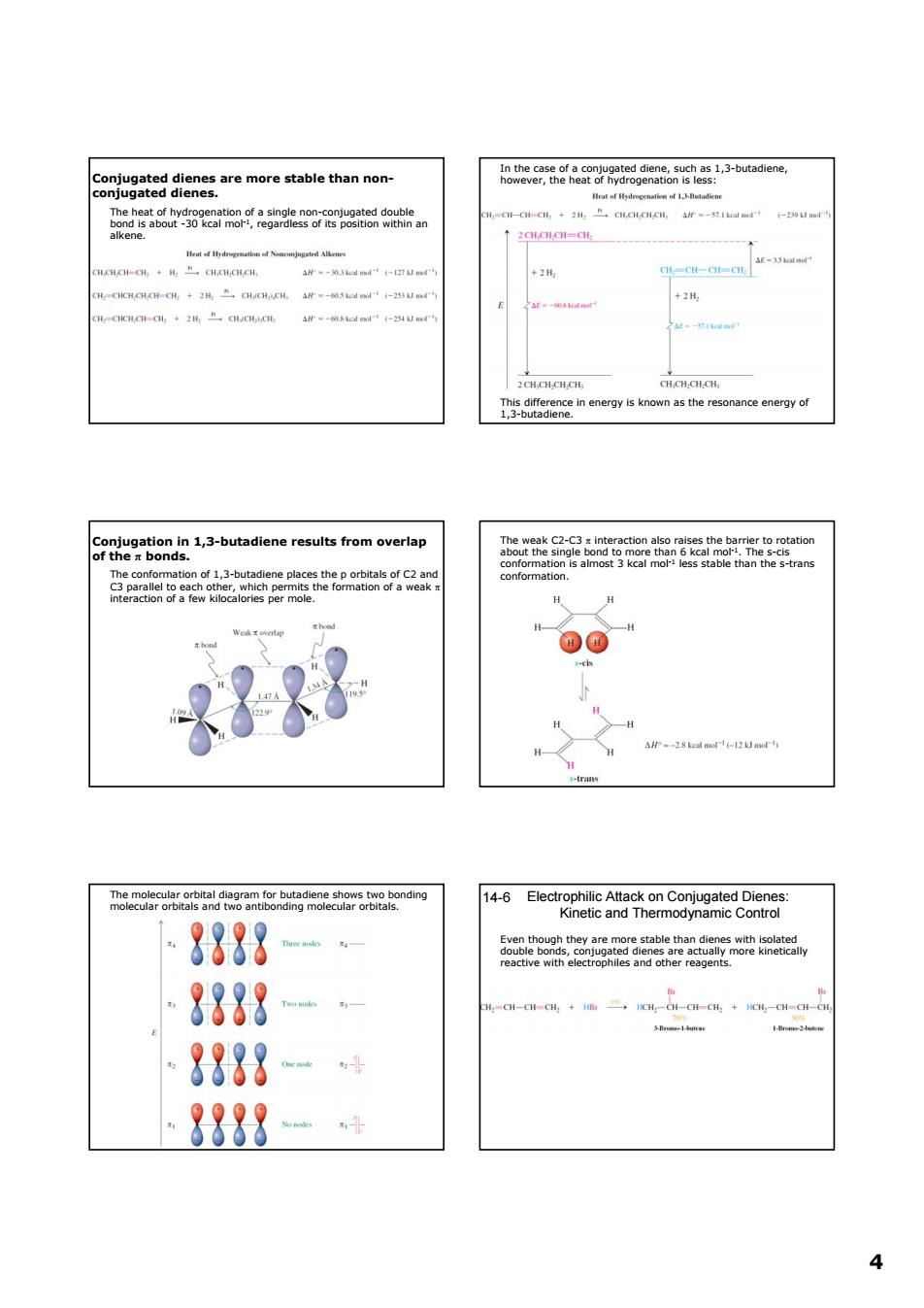正在加载图片...

conjugte ener stable thano the-eneasegiegn8o5he1,3-butadene 8660aasgge2ea CIOIOI-Ol H0L-d-0t +2 an-o3te 1 3-hutadiene as the of 00 得 H H s-tras meaoeeoerabalgegamiagthaeoeherawo2ndna 146Eectcpatcanatnenmconaaeconre 8888 8888 8888 8888 44 Conjugated dienes are more stable than nonconjugated dienes. The heat of hydrogenation of a single non-conjugated double bond is about -30 kcal mol-1, regardless of its position within an alkene. In the case of a conjugated diene, such as 1,3-butadiene, however, the heat of hydrogenation is less: This difference in energy is known as the resonance energy of 1,3-butadiene. Conjugation in 1,3-butadiene results from overlap of the π bonds. The conformation of 1,3-butadiene places the p orbitals of C2 and C3 parallel to each other, which permits the formation of a weak π interaction of a few kilocalories per mole. The weak C2-C3 π interaction also raises the barrier to rotation about the single bond to more than 6 kcal mol-1. The s-cis conformation is almost 3 kcal mol-1 less stable than the s-trans conformation. The molecular orbital diagram for butadiene shows two bonding molecular orbitals and two antibonding molecular orbitals. Electrophilic Attack on Conjugated Dienes: Kinetic and Thermodynamic Control 14-6 Even though they are more stable than dienes with isolated double bonds, conjugated dienes are actually more kinetically reactive with electrophiles and other reagents